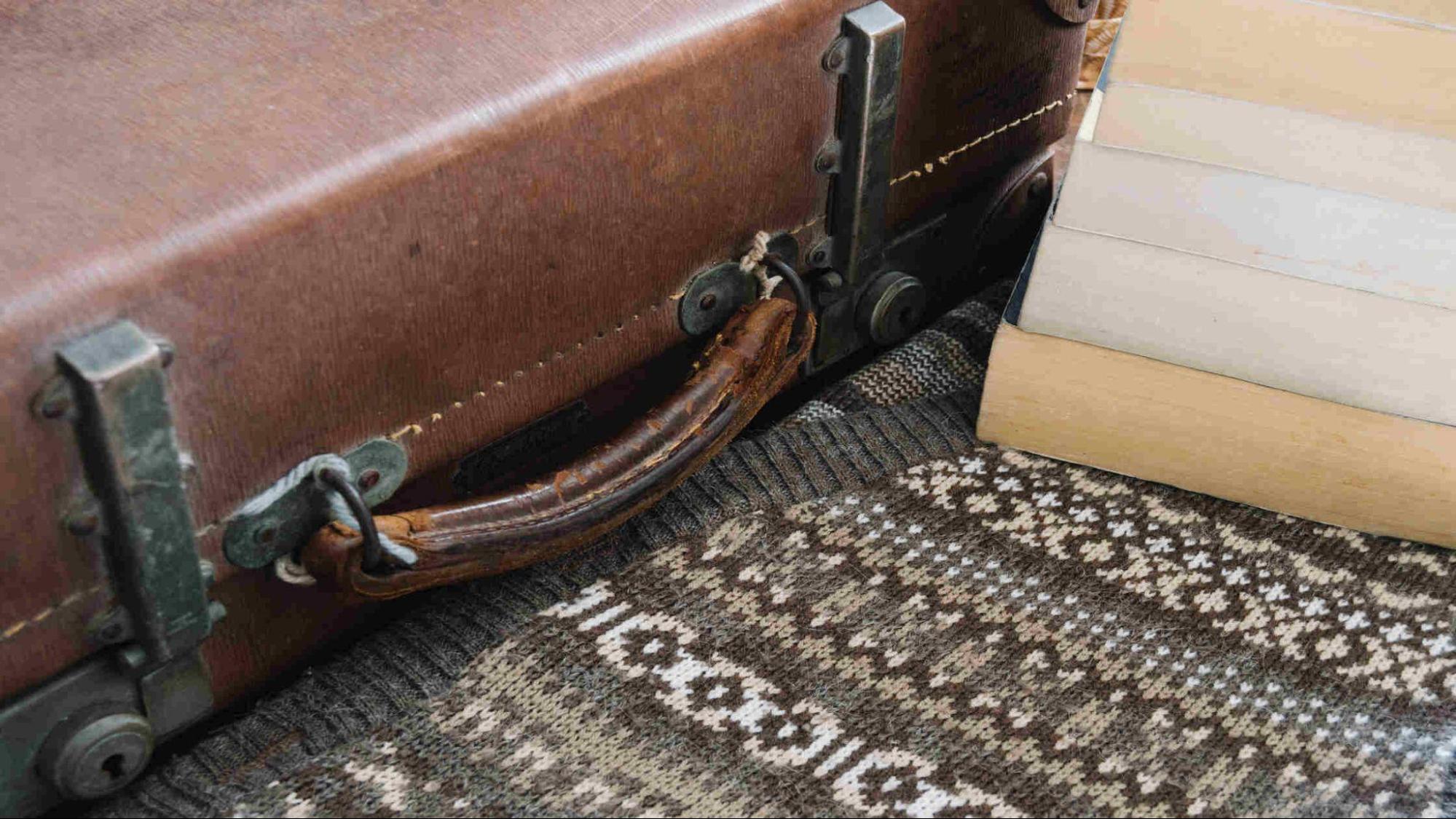
Normal wear and tear happens in every rental. Scuffed baseboards, slightly faded paint, or a few carpet dents from furniture come with the territory. In this guide, we break down exactly what counts, what doesn’t, and how to navigate the laws that govern it all.
What Does 'Normal Wear and Tear' Mean?

What is considered normal wear and tear? Normal wear and tear is the natural, gradual deterioration of a rental property that occurs over time through regular, everyday use. This happens regardless of how careful a tenant is and is not considered neglect or damage. Common factors that cause wear include surface material (hardwood, tile, carpet), frequency of use (daily foot traffic, frequent opening of doors and windows), and exposure to weather (sunlight, humidity, temperature changes).
For example, you might see scuffed hardwood floors from years of walking, faded wall paint caused by constant sunlight, loosened door handles from repeated use, or worn carpet fibers in high-traffic areas like hallways and living rooms. These are normal signs of a property aging naturally over time.
What Are the Wear and Tear Laws in Each State?

Every state handles wear and tear on a rental property a bit differently. Some provide specific language in their landlord-tenant laws, others leave it up to court interpretation. If you’re looking for a broader view of which states are more favorable for landlords, check out this guide on landlord-friendly states below:
- California: Landlords must clearly distinguish between ordinary wear (like fading paint or minor carpet matting) and tenant-caused damage (such as large stains or broken fixtures). The state also requires landlords to return the security deposit within 21 days, along with an itemized list of deductions.
- Texas: Texas does not have specific definitions for normal wear and tear in its landlord-tenant law. This leaves a lot of interpretation to the courts, meaning landlords must rely heavily on evidence, including photos and inspection reports. The state does provide that landlords must return deposits within 30 days.
- New York: New York’s laws are more protective of tenants than many other states. While there’s no clear-cut definition of normal wear and tear, New York courts generally favor tenants when the landlord cannot clearly demonstrate that damage exceeds normal use. The state also requires landlords to return security deposits within a reasonable time frame (often 14 to 30 days) and provide an itemized list of deductions. However, a well-documented move-in checklist and photos are powerful tools for landlords in proving that certain damage was caused by the tenant, not general wear.
- Florida: Florida law provides a clear framework for handling security deposits and wear and tear on a rental property. Landlords must return the tenant’s security deposit within 15 to 30 days and provide an itemized list of deductions, if any. Florida law specifically prohibits landlords from charging tenants for wear that is a natural result of occupancy, like fading paint or minor scuffs on the wall.
- Illinois: In Illinois, landlord-tenant law emphasizes transparency and fairness. Landlords must return the security deposit within 30–45 days after the tenant moves out. Deductions for damage are acceptable, but the law states that wear resulting from ordinary living should not be charged. Minor fading of paint, light scuff marks, or minor carpet wear fall under normal wear.
Who Is Responsible for Wear and Tear: Landlord or Tenant?
In nearly every state, landlords take responsibility for normal wear and tear. These minor issues reflect the natural aging of the unit, and tenants cannot be held financially accountable for them.
Tenants, on the other hand, must cover the cost of damage—issues that go beyond normal use and result from negligence, accidents, or unauthorized changes. Common examples include:
- Neglect (e.g., not reporting leaks that lead to mold)
- Accidents (e.g., broken windows, cigarette burns)
- Unapproved changes (e.g., repainting rooms bright colors)
Pro tip: Having a good interview during tenant screening can help you avoid problems with damages and payments. Check out our blog for questions to ask potential tenants before you decide!
What Are Examples of Normal Wear and Tear?

Many signs of use simply come with tenant occupancy. Below is a 4 typical list of normal wear and tear for renters, broken down by area of the home. Of these, carpet wear along walkways, small nail holes in walls, and light scuffs from furniture are the issues landlords encounter most often during move-out inspections.
Floors and Carpets
Floors and carpets tend to show the first signs of tenant turnover. Foot traffic, furniture placement, and regular use gradually wear them down. In most cases, carpets lose color or texture along commonly walked paths.
- Minor scuffs or scratches on hardwood from daily foot traffic
- Indentations from beds, couches, or dining tables
- Slight fraying near thresholds or edges
Walls and Paint
Walls serve as a canvas for life, so some imperfections tend to appear by the end of a lease. Small nail holes from hanging art, scuff marks from backpacks brushing against corners, or dulling paint from years of sun exposure all reflect wear and tear on walls.
- Tiny nail holes from artwork or picture frames
- Light scuffs from furniture or daily movement
- Hairline cracks due to building settling
Kitchens and Appliances
The kitchen works hard, and some surface aging comes with the territory.
- Faded burner dials or appliance markings
- Light scratches on counters and cabinet doors
- Loosening knobs or minor finish wear
- Discoloration around sink drains or faucet bases
Bathrooms
Humidity and constant use wear down bathroom surfaces faster than most areas of a home.
- Foggy mirrors from age or humidity
- Grout discoloration or light mildew in corners
- Slight rust on fixtures or hardware
- Peeling caulk along tubs or sinks
- Water spots on shower glass
How Is Normal Wear and Tear Different from Damage?
Knowing the difference between normal wear and tear and damage is important for both landlords and tenants. This distinction decides who is responsible for repairs, whether money comes out of the security deposit, and can help avoid conflicts when a lease ends.
Normal wear and tear refers to the gradual changes that happen as a property ages through everyday use. Even with a careful tenant, things like faded wall paint, loose door handles, or flattened carpet in busy walkways are bound to appear over time. Damage, however, is caused by neglect, accidents, or misuse issues such as broken tiles, holes in the wall, or burn marks on a countertop.
In conclusion, landlords handle normal wear and tear as part of routine maintenance, while tenants are expected to cover the cost of any damage that goes beyond everyday use. Having a detailed move-in checklist, along with photos, can make it much easier to prove which is which at the end of a lease.
How Does Time Affect Wear and Tear?
Time leaves its mark on every property, no matter how careful the tenant. These changes occur gradually and consistently.
Normal Wear and Tear After 1 Year
One year of occupancy leaves mild, surface-level signs of use.
Some common examples are:
- Carpet showing early signs of flattening in walkways
- A few nail holes from light wall decor
- Slight scuffing on walls or baseboards
- Light water stains near kitchen or bathroom sinks
- Dull shine on hardwood in high-use zones
- Appliance handles showing early signs of wear
Normal Wear and Tear After 2 Years
Two years bring deeper wear in high-traffic areas, but still fall within reasonable expectations.
Some common examples are:
- Carpet wear more noticeable, especially near entries or hallways
- Fading paint near windows or under direct sunlight
- Minor cabinet door misalignment from regular use
- Loose doorknobs or squeaky hinges
- Slight grout discoloration in bathroom tiles
- Refrigerator or stove showing age on dials and surfaces
Normal Wear and Tear After 5 Years
At the five-year mark, wear appears in almost every room. Most finishes, paints, and flooring materials naturally show their age.
Some common examples are:
- Major carpet flattening or discoloration in key areas
- Paint requiring a full refresh
- Appliance handles fading or labels wearing off
- Hardwood floors losing finish or showing deep scuff patterns
- Bathroom fixtures dull or lightly corroded
- Cabinets with worn edges or chipping laminate
In short, after five years, most surfaces and finishes show clear aging: carpets flatten, paint needs a full refresh, appliances fade, and fixtures lose their shine. All typical signs of normal wear and tear.
How Do Landlords Manage Normal Wear and Tear
Normal wear and tear is a natural part of renting. Here’s how landlords handle it fairly and keep properties in good shape:
1. Document both move-in and move-out conditions
Take photos, notes, or a signed checklist at both the beginning and end of the lease. This documentation is key if there’s a dispute over deductions.
2. Review your state’s rules on security deposits
States vary on rules around deposit returns and allowed deductions. For example:
- California: Only tenant-caused damage—not natural deterioration—can be deducted from the deposit (per California Civil Code Section 1950.5).
- Florida: Courts have ruled that faded paint and worn carpet count as normal wear and tear, meaning such things shouldn’t be deducted.
3. Only deduct for damage beyond normal aging
Landlords can charge tenants for damage—like holes in the walls, stains, burns, or broken fixtures—but not for signs of aging like minor scuffs or faded surfaces.
4. Follow the rules on returning deposits
In across various states, landlords must return security deposits with an itemized list of deductions within a specified timeframe (often 14–60 days). Failing to do this can result in penalties.
5. Set clear rules in the lease
The rental agreement should explain what counts as normal wear and what counts as damage. This way, both sides know what to expect.
Landlords manage normal wear and tear primarily by distinguishing it from tenant damage, conducting move-in and move-out inspections, budgeting for routine maintenance, and communicating clearly with tenants about responsibilities and expectations.
Normal wear and tear is the expected, progressive aging of a property resulting from ordinary use, such as paint fading, minor loosening of door hardware, carpet wear in frequently walked areas, light wall scuffing, and slight surface discoloration. Such wear is not the tenant’s responsibility, as it is deemed part of the property’s and fixtures’ natural aging.
When Can a Landlord Charge for Damage?
Landlords often find themselves in a tricky situation when it comes to distinguishing between normal wear and tear and actual damage. The difference can be subtle, but when it’s clear that a tenant’s actions have caused damage, the landlord has the right to charge for repairs.
But how do you know when it’s truly damaged?
- Excessive stains on carpets or flooring that can't be cleaned, especially if the tenant caused them (e.g., spilled wine or grease).
- Large holes in walls or doors that require extensive patching and painting. A few nail holes or small scuffs are normal, but large, noticeable damage is not.
- Broken or missing fixtures, such as light fixtures, blinds, or cabinet handles, that were intentionally broken or neglected.
- Pet damage, like scratched-up floors, torn carpets, or foul odors from pets that were not disclosed or cared for properly.
- Water damage caused by tenants’ negligence, such as leaving a faucet running or damaging plumbing.
Landlords can charge for the costs of repairs or replacements that go beyond the scope of ordinary use, but these repairs must be reasonable and well-documented.
How Do You Document Wear and Tear?
Proper documentation is your best defense when it comes to distinguishing between normal wear and actual damage.
Here are some tips for documenting wear and tear effectively:
- Move-In/Move-Out Checklist: Before your tenant moves in, walk through the property together and note its condition. This document should include specific details, like the condition of the walls, carpets, appliances, and fixtures.
- Photographs and Videos: A picture is worth a thousand words. Take time-stamped photos or videos during the move-in inspection and again when the tenant moves out.
- Routine Inspections: Conduct regular, documented inspections (with proper notice to the tenant).
- Keep All Correspondence: Save any communication between you and the tenant regarding repairs, complaints, or maintenance requests.
- Repairs and Receipts: Keep copies of any repair invoices or receipts for work done on the property.
What Do Courts Say About Wear and Tear Disputes?
When a dispute about wear and tear versus damage goes to court, the outcome can depend largely on the evidence presented. Courts typically favor landlords who can show clear, undeniable evidence of tenant-caused damage.
In wear and tear disputes, courts consider several important factors. Clear documentation is crucial; if a landlord has a detailed move-in checklist, photos, and receipts, they are more likely to win the case. Without this evidence, courts may favor tenants, especially if there is ambiguity about whether an issue is normal wear or damage.
Additionally, the age and condition of the property are taken into account. Items that were already worn before the tenant moved in cannot be classified as damage. Normal aging is expected, but understanding what constitutes “normal” wear is essential.
State-specific laws also play a significant role, as regulations differ from one state to another. Some states provide greater protections for tenants, while others favor landlords regarding security deposits and property conditions. Hence, knowing these local regulations is crucial for both parties in any dispute. In the end, documentation and reasonable charges are key when facing a court dispute.
Wrap Up
Navigating the line between normal wear and tear and tenant-caused damage is part of being a successful landlord. For more expert tips on managing your rental properties effectively, continue reading on LeaseRunner!
FAQs
Q1. What Is Normal Wear And Tear Apartment?
Normal wear and tear is the natural deterioration of a rental property that occurs over time due to regular use. It is expected and not the tenant’s fault. Landlords generally cannot charge tenants for regular signs of usage, as discussed in detail in our blog about what landlords cannot do.
Q2. What Is Normal Wear And Tear After 2 Years?
After two years, normal wear and tear can become more noticeable, but it still includes the expected aging of the property.
- Minor scratches on hardwood floors or furniture.
- Fading or minor scuffs on paint or walls.
- Carpet wear in high-traffic areas, including flattening or discoloration.
- Small chips or scratches on appliances from regular use.
At this stage, more visible signs of aging are reasonable, but landlords should not expect major damage like broken fixtures or serious staining unless caused by the tenant.







